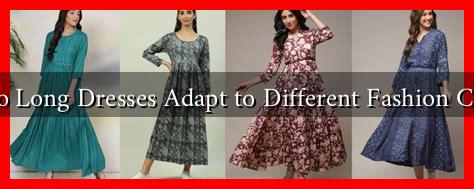-
Table of Contents
How Do Long Dresses Adapt to Different Fashion Cultures?
Long dresses have been a staple in women’s fashion across various cultures for centuries. Their versatility allows them to adapt to different fashion sensibilities, cultural norms, and social contexts. This article explores how long dresses have evolved and adapted to various fashion cultures around the world, highlighting their significance and the factors that influence their design and use.
The Historical Significance of Long Dresses
Long dresses have a rich history that dates back to ancient civilizations. In many cultures, they symbolize femininity, grace, and modesty. For instance:
- Ancient Egypt: Women wore long, flowing linen dresses that allowed for ease of movement in the hot climate.
- Medieval Europe: Long gowns were a sign of status and wealth, often adorned with intricate embroidery and luxurious fabrics.
- Asian Cultures: Traditional garments like the kimono in Japan and the saree in India feature long lengths that reflect cultural values and aesthetics.
These historical contexts set the stage for how long dresses continue to evolve in contemporary fashion cultures.
Modern Adaptations in Western Fashion
In Western fashion, long dresses have undergone significant transformations, influenced by various movements and trends. The 1960s and 1970s saw the rise of the maxi dress, which became a symbol of the counterculture movement. Today, long dresses are embraced in various styles, including:
- Bohemian: Flowing fabrics, floral patterns, and relaxed silhouettes characterize this style, appealing to free-spirited individuals.
- Formal Wear: Long evening gowns are a staple for formal events, often featuring luxurious materials and intricate designs.
- Casual Wear: Long dresses are now available in comfortable fabrics, making them suitable for everyday wear.
According to a report by Statista, the global women’s dress market is projected to reach $200 billion by 2025, indicating a growing demand for diverse styles, including long dresses.
Long Dresses in Non-Western Cultures
In non-Western cultures, long dresses often carry deep cultural significance and are integral to traditional attire. For example:
- India: The saree, a long piece of fabric draped elegantly around the body, is a symbol of grace and tradition.
- Middle East: The abaya, a long, flowing garment worn by women, reflects cultural values of modesty and respect.
- Africa: Many African cultures have traditional long dresses that incorporate vibrant colors and patterns, often worn during ceremonies and celebrations.
These garments not only serve as fashion statements but also as expressions of identity and heritage.
Globalization and the Fusion of Styles
The advent of globalization has led to a fascinating fusion of fashion cultures. Long dresses are no longer confined to their traditional roots; they are being reinterpreted and blended with contemporary styles. This cross-cultural exchange is evident in:
- Street Fashion: Long dresses are often paired with modern accessories, creating unique looks that reflect individual style.
- Fashion Weeks: Designers from around the world showcase long dresses that incorporate elements from various cultures, promoting diversity in fashion.
- Social Media Influence: Platforms like Instagram and TikTok have popularized diverse styles of long dresses, making them accessible to a global audience.
This blending of styles not only enriches the fashion landscape but also fosters a greater appreciation for cultural diversity.
Conclusion
Long dresses are a testament to the adaptability of fashion across different cultures. From their historical roots to modern interpretations, they continue to evolve while retaining their cultural significance. As globalization fosters cross-cultural exchanges, long dresses will likely remain a versatile and cherished element of women’s fashion worldwide. Understanding the cultural contexts and adaptations of long dresses allows us to appreciate the rich tapestry of fashion that transcends borders.
For more insights into the evolution of fashion, you can visit Vogue for the latest trends and cultural influences in the fashion industry.

